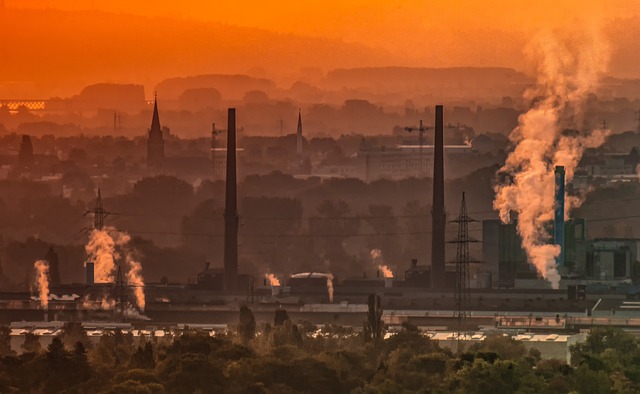Chemicals and Pollution: Causes and Effects
Chemicals play a crucial role in environmental science, both as contributors to pollution and as solutions for sustainability. Many human activities, including industrial production, agriculture, and transportation, release chemical pollutants into the air, water, and soil.
Causes of Chemical Pollution
1. Industrial Emissions – Factories release chemicals such as sulfur dioxide, nitrogen oxides, and heavy metals into the environment, contributing to air and water pollution.
2. Agricultural Runoff – Pesticides and fertilizers used in farming can leach into waterways, causing contamination and ecosystem disruptions.
3. Plastic Waste – Chemical additives in plastics, such as phthalates and bisphenols, pollute land and marine environments as plastics degrade.
4. Oil Spills – Accidental spills release hydrocarbons into oceans, severely affecting marine life and coastal ecosystems.
5. Household Chemicals – Cleaning agents, paints, and personal care products can contain harmful substances that enter water supplies.
Effects of Chemical Pollution
– Air Pollution – Chemicals like carbon monoxide and volatile organic compounds (VOCs) contribute to smog and respiratory illnesses.
– Water Contamination – Heavy metals and synthetic compounds disrupt aquatic ecosystems and threaten drinking water safety.
– Soil Degradation – Chemicals in pesticides and industrial waste alter soil composition, affecting agriculture and biodiversity.
– Health Risks – Exposure to toxic chemicals can lead to neurological disorders, cancers, and other health problems.
Green Chemistry and Sustainable Practices
Green chemistry focuses on designing chemical products and processes that minimize environmental impact. Sustainable practices help reduce pollution and promote the efficient use of resources.
Principles of Green Chemistry
1. Waste Prevention – Designing processes that generate minimal waste instead of managing waste after it is produced.
2. Atom Economy – Maximizing the incorporation of all materials used in the reaction into the final product.
3. Safer Chemicals – Developing substances with minimal toxicity to humans and the environment.
4. Energy Efficiency – Using renewable energy sources and optimizing reaction conditions to reduce energy consumption.
5. Use of Renewable Feedstocks – Sourcing raw materials from sustainable and non-depleting resources.
6. Biodegradable Products – Creating materials that naturally break down without harming ecosystems.
Examples of Green Chemistry in Action
– Bio-based Plastics – Replacing petroleum-based plastics with biodegradable alternatives made from plant starches.
– Eco-friendly Solvents – Using water or ionic liquids instead of hazardous organic solvents in chemical processes.
– Cleaner Manufacturing – Implementing processes that reduce harmful emissions and chemical waste.
Chemical Waste Management and Recycling
Proper disposal and recycling of chemical waste are essential for preventing environmental contamination. Several methods help manage chemical waste effectively:
Hazardous Waste Disposal Methods
1. Incineration – Controlled burning of hazardous waste at high temperatures to neutralize toxic compounds.
2. Chemical Treatment – Neutralization and precipitation methods used to detoxify harmful substances before disposal.
3. Secure Landfills – Specially designed landfills prevent hazardous chemicals from leaching into groundwater.
Recycling and Reuse
1. Solvent Recovery – Distillation processes reclaim and purify used solvents for reuse in industries.
2. Battery Recycling – Recovering valuable metals like lithium and cobalt from used batteries to reduce mining impacts.
3. Waste-to-Energy Systems – Converting chemical waste into energy through advanced combustion or anaerobic digestion.
The Future of Eco-Friendly Chemical Solutions
Advancements in chemical research are paving the way for more sustainable solutions that reduce environmental impact. Emerging trends include:
1. Nanotechnology for Pollution Control
Nanomaterials are being developed to absorb and neutralize pollutants in air and water.
2. Bioremediation Techniques
Microorganisms are used to break down and remove contaminants from soil and water.
3. Carbon Capture and Storage (CCS)
Chemical processes are being designed to capture CO₂ emissions from industrial plants and store them underground.
4. Alternative Energy Solutions
Chemical innovations are leading to more efficient solar panels, hydrogen fuel cells, and biofuels to replace fossil fuels.
Conclusion
Chemicals have a profound impact on the environment, both as pollutants and as tools for sustainability. Through green chemistry, proper waste management, and innovative technologies, the chemical industry can contribute to a cleaner and more sustainable future. By adopting eco-friendly solutions, society can reduce its environmental footprint and protect ecosystems for future generations.
City Chemical LLC is a top producer of chemicals like: Gold Chloride CAS: 16961-25-4, Lead Iodide CAS: 10101-63-0, Lead Thiosulfate CAS: 502-87-4, Humic Acid CAS: 1415-93-6, Methylphthalyl Ethyl Glycolate CAS: 85-71-2.
Visit City Chemical at www.citychemical.com.
